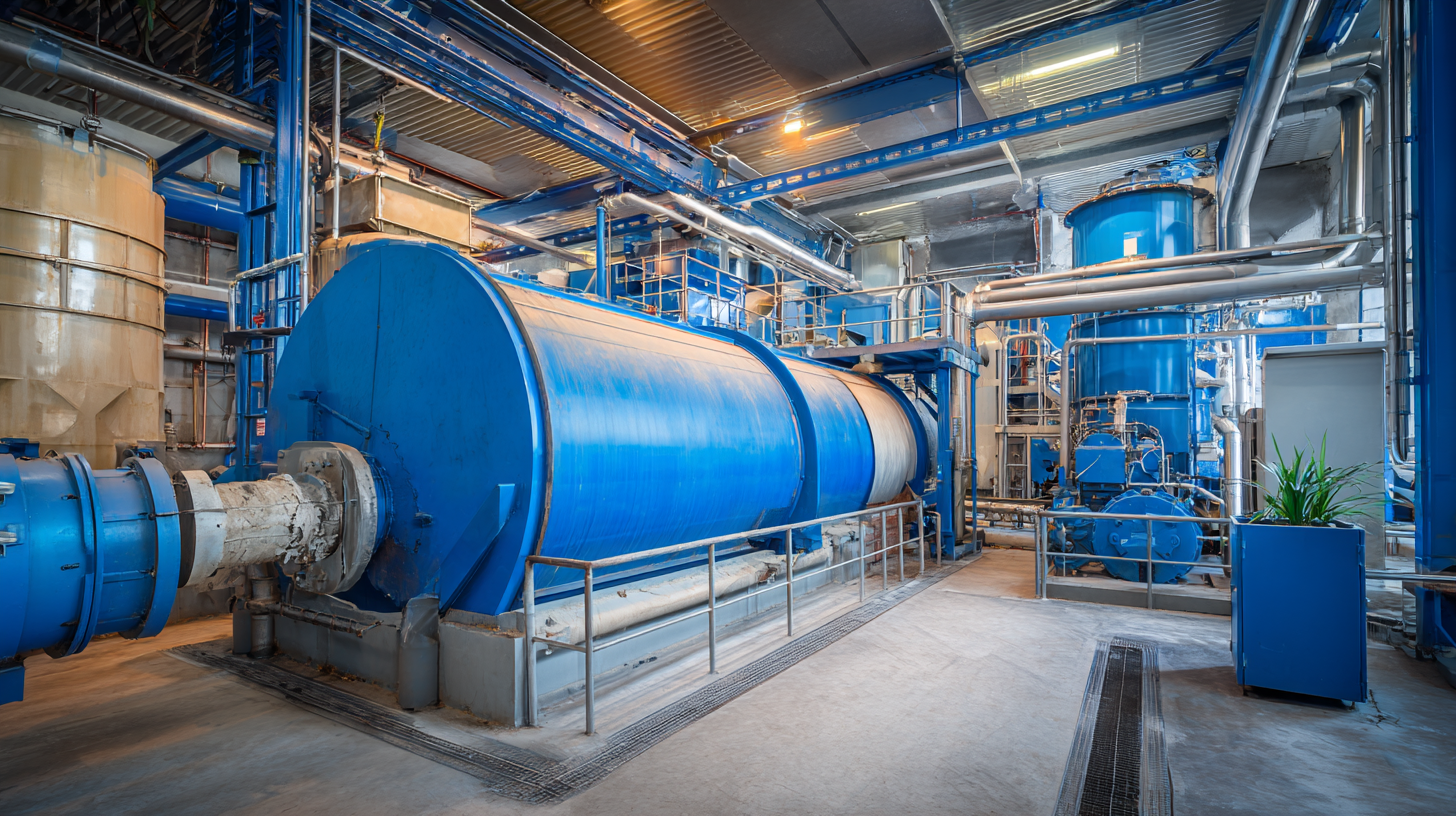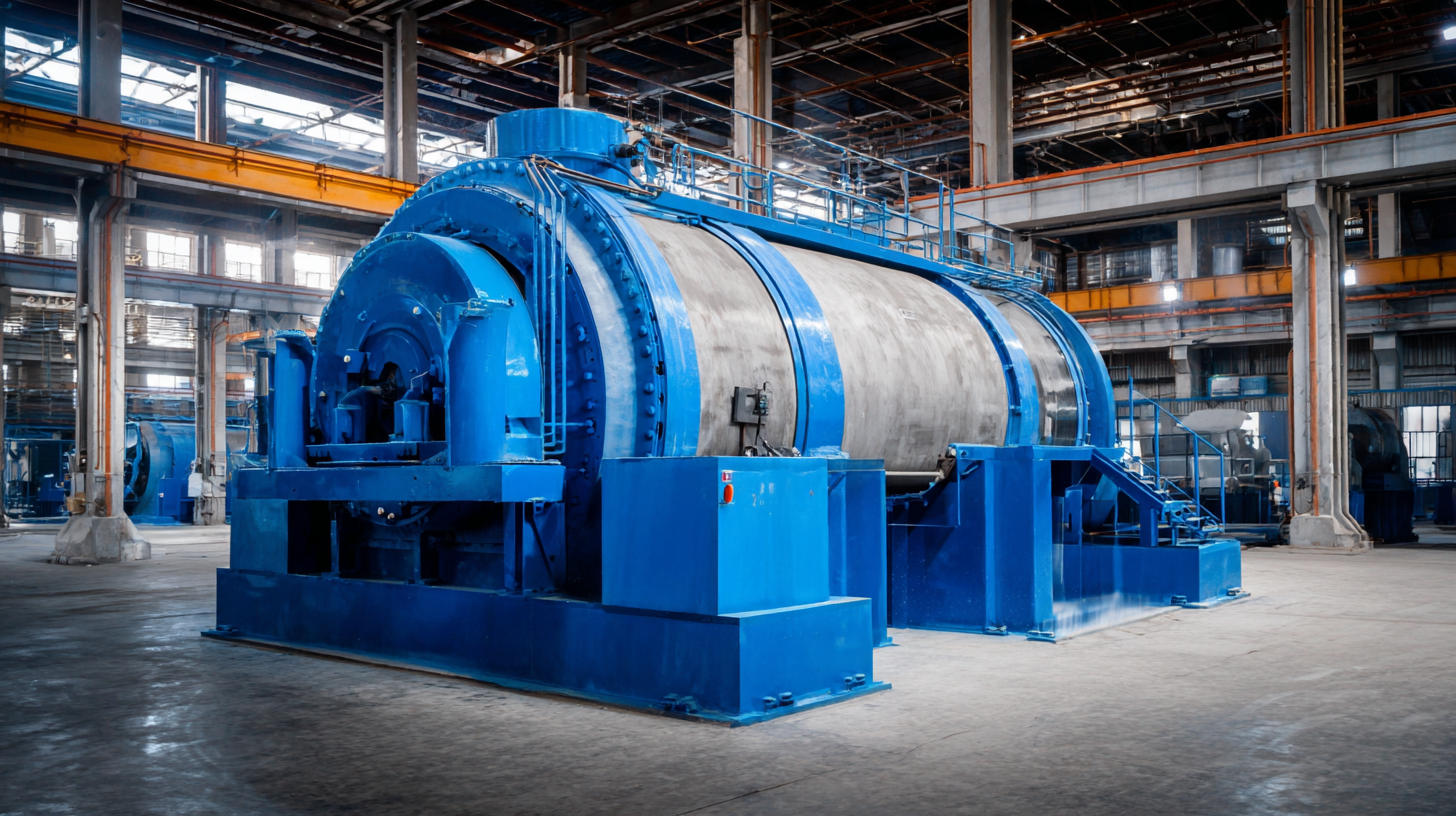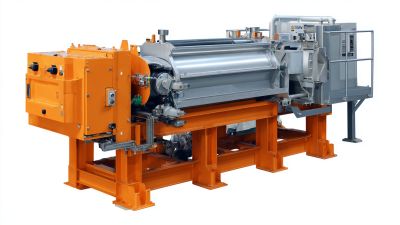 +86 13600513715
+86 13600513715



In the evolving landscape of modern water treatment systems, the significance of efficient filtration technologies cannot be overstated. Among these, the Rotary Drum Filter stands out as a pivotal component, effectively enhancing the filtration process to meet the increasing demands for water quality. According to a report by the Global Water Intelligence, the water and wastewater treatment market is projected to reach $500 billion by 2025, driven largely by advancements in filtration technology and environmental regulations.

Rotary Drum Filters, known for their versatility and efficiency, are crucial in various applications ranging from municipal wastewater treatment to industrial process water recycling. By leveraging their superior solid-liquid separation capabilities, facilities can significantly reduce operational costs and mitigate environmental impacts. This article will explore how embracing Rotary Drum Filters can revolutionize water treatment operations, ensuring a sustainable approach to managing one of the world's most precious resources.
Rotary drum filters play a pivotal role in modern water treatment systems by efficiently enhancing water quality standards. These filters utilize a rotating drum covered with a mesh screen that captures solid contaminants as water passes through. This dynamic filtration process not only removes particulates but also allows for continuous operation, making it an ideal choice for treating large volumes of water with minimal downtime. By significantly reducing turbidity and suspended solids, rotary drum filters ensure that the treated water meets or exceeds regulatory quality standards.
Moreover, the versatility of rotary drum filters extends their application across various sectors, including municipal wastewater treatment, industrial processes, and aquaculture. Their design can be tailored to specific needs, allowing for the adjustment of mesh sizes and configurations to target different contaminants effectively. As a result, these filters contribute to the overall improvement of water quality, promoting environmental sustainability and safeguarding public health. With advancements in technology, rotary drum filters continue to evolve, offering more efficient and eco-friendly solutions to the growing challenges of water treatment.

Rotary drum filters (RDFs) have emerged as a vital component in modern water treatment systems, providing efficient solid-liquid separation. To gauge their effectiveness, several key performance metrics should be analyzed. According to the Water Environment Federation (WEF), the filtration efficiency of rotary drum filters can exceed 95%, significantly improving the overall quality of treated water. Furthermore, operational parameters such as filtration rate and backwashing frequency are crucial; optimal filtration rates typically range between 15 to 30 m³/h·m², ensuring high throughput while maintaining separation efficiency.
When evaluating RDFs, it's essential to monitor their cake thickness, which can influence further processing stages. A cake thickness of 1-3 mm has been found optimal for maintaining low resistance during washing while ensuring adequate filtration. Additionally, operators should implement regular maintenance checks to reduce downtime, as even minor malfunctions can lead to significant operational inefficiencies.
**Tip:** Always calibrate your RDF system according to the specific characteristics of the wastewater to achieve maximum efficiency and performance.
**Tip:** Regularly analyze the filter cake for composition and moisture content, as this information can help fine-tune operations and improve overall water quality.
| Performance Metrics | Description | Typical Value | Unit |
|---|---|---|---|
| Filtration Efficiency | Percentage of solids removed from wastewater | 95% | % |
| Flow Rate | Volume of water treated per unit time | 1200 | m³/h |
| Backwash Frequency | How often the system is backwashed to maintain performance | 4 | times/day |
| Total Suspended Solids (TSS) Removal | Reduction in suspended solids concentration | 80% | % |
| Energy Consumption | Energy used per cubic meter of water treated | 0.5 | kWh/m³ |
In modern water treatment systems, the choice between rotary drum filters and traditional filtration methods is increasingly becoming a focal point of comparative analysis.
Rotary drum filters offer unparalleled efficiency in solids removal, thanks to their continuous operation and automated processes. This enhances not just the filtration efficacy but also contributes to energy savings and lower operational costs.
In contrast, traditional methods often require manual intervention and can result in higher waste generation and energy consumption.
As industries seek cleaner production solutions, incorporating rotary drum filters can significantly reduce emissions.
Recent innovations in filtration technologies highlight the shift towards more efficient and sustainable practices, much like advancements seen in other areas of processing such as biofiltration techniques that adeptly handle volatile organic compounds and heavy metals.
These developments suggest a broader trend where modern filtration methods are designed not only for effectiveness but also for environmental stewardship.
Tips: When selecting filtration systems for water treatment, consider factors such as energy efficiency and ease of maintenance. Additionally, explore newer technologies that apply membrane-based methods to enhance purification processes while reducing operational waste.
Always assess the long-term benefits versus upfront costs to ensure sustainable investment in your filtration systems.
Emerging technologies in rotary drum filter design are revolutionizing water treatment systems, making them more efficient and sustainable. With advancements in materials and engineering, modern rotary drum filters are capable of achieving higher filtration rates and reduced energy consumption. For instance, recent studies indicate that enhanced filter media can increase the surface area by up to 30%, resulting in improved contaminant removal efficiency. This innovation not only ensures cleaner water but also lowers operational costs for treatment facilities.
Furthermore, the integration of smart monitoring systems into rotary drum filters is allowing operators to optimize performance in real-time. By employing sensors that track pressure, flow rates, and maintenance needs, these systems can provide actionable insights, which lead to reduced downtime and extended equipment lifespan. According to industry reports, implementing such intelligent systems can improve overall energy efficiency by up to 25%, demonstrating how cutting-edge technology can drive both environmental sustainability and cost-effectiveness in modern water treatment practices.
 Rotary drum filters have emerged as a pivotal technology in contemporary water treatment systems, significantly contributing to environmental sustainability and resource recovery. These filters operate on a simple principle: as water flows through the rotating drum, solid contaminants are effectively captured, leaving behind cleaner effluent. This capability not only enhances the quality of treated water but also reduces the volume of sludge produced, making the treatment process more efficient and less resource-intensive.
Rotary drum filters have emerged as a pivotal technology in contemporary water treatment systems, significantly contributing to environmental sustainability and resource recovery. These filters operate on a simple principle: as water flows through the rotating drum, solid contaminants are effectively captured, leaving behind cleaner effluent. This capability not only enhances the quality of treated water but also reduces the volume of sludge produced, making the treatment process more efficient and less resource-intensive.
Furthermore, the implementation of rotary drum filters can lead to remarkable advancements in resource recovery. By efficiently filtering out contaminants, these systems facilitate the extraction of valuable materials from wastewater, such as nutrients and organic matter, which can be repurposed for agricultural applications or energy generation. This dual benefit of cleaning water while simultaneously recovering resources exemplifies how rotary drum filters play a crucial role in circular economy practices. Their integration into water treatment facilities is a testament to the ongoing commitment to environmental stewardship and sustainable resource management in modern water treatment systems.






